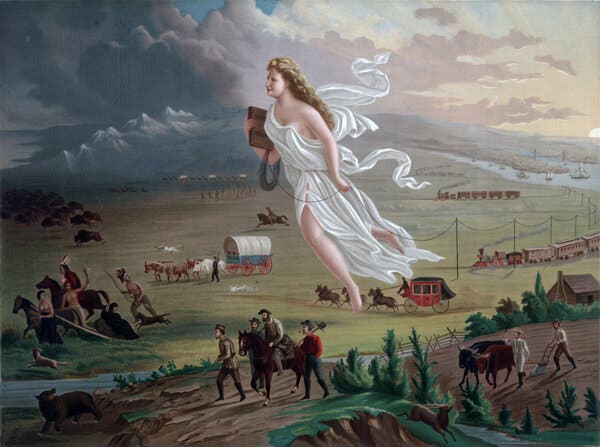John Gast’s allegorical masterpiece, “American Progress,” though modest in origin, played a significant role in shaping the narrative of the United States’ westward expansion during the late 1800s.
More than 150 years after its creation, the painting’s symbolism remains potent. This past summer, the Department of Homeland Security shared the image on social media, captioning it “A Heritage to be proud of, a Homeland worth Defending,” which garnered approximately 37,000 likes on the platform X.
For the Trump administration, the artwork represents patriotism and the advancement brought by American pioneers who spread technology, democracy, and Western civilization’s benefits.
However, some historians argue that the Department of Homeland Security’s message, when paired with this painting, glorifies a history intertwined with racism and overlooks the complex realities of whose land was truly at stake.
Critics point out that Gast’s depiction neglects the fact that much of the territory celebrated as the American homeland was originally inhabited by Mexicans and Indigenous peoples who were forcibly displaced or succumbed to diseases introduced by settlers.
Martha A. Sandweiss, emeritus professor of history at Princeton University and director of The Princeton Slavery Project, remarked, “The ironies are profound. This painting—commissioned by a publisher of a popular western guidebook—does not show people defending their homeland. Instead, it portrays white men, accompanied by an angelic figure adorned with a ‘Star of Empire,’ encroaching upon the lands of others.”


0 Comments
No comments yet. Be the first to comment!